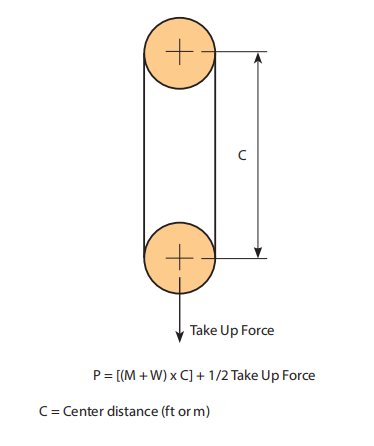Introduction
A mindful evaluation of the conditions surrounding a conveyor is necessary for exact conveyor chain choice. This part discusses the basic concerns required for productive conveyor chain variety. Roller Chains tend to be made use of for light to reasonable duty materials managing applications. Environmental disorders may possibly demand the usage of unique elements, platings coatings, lubricants or the skill to operate without the need of supplemental external lubrication.
Primary Info Expected For Chain Choice
? Type of chain conveyor (unit or bulk) including the process of conveyance (attachments, buckets, by rods etc).
? Conveyor layout together with sprocket spots, inclines (if any) and the quantity of chain strands (N) to get made use of.
? Amount of materials (M in lbs/ft or kN/m) and sort of materials to become conveyed.
? Estimated bodyweight of conveyor parts (W in lbs/ft or kN/m) like chain, slats or attachments (if any).
? Linear chain velocity (S in ft/min or m/min).
? Environment during which the chain will operate which include temperature, corrosion circumstance, lubrication situation and so forth.
Phase one: Estimate Chain Tension
Use the formula beneath to estimate the conveyor Pull (Pest) then the chain tension (Check). Pest = (M + W) x f x SF and
Test = Pest / N
f = Coefficient of Friction
SF = Pace Issue
Step 2: Create a Tentative Chain Variety
Working with the Check value, create a tentative assortment by picking a chain
whose rated functioning load higher than the calculated Test value.These values are appropriate for conveyor service and are diff erent from people proven in tables with the front on the catalog that are linked to slow speed drive chain usage.
Additionally to suffi cient load carrying capacity typically these chains need to be of the specific pitch to accommodate a desired attachment spacing. For example if slats are to become bolted to an attachment every 1.5 inches, the pitch on the chain picked should divide into one.5?¡À. Consequently 1 could use a forty chain (1/2?¡À pitch) with all the attachments each 3rd, a 60 chain (3/4?¡À pitch) together with the attachments every 2nd, a 120 chain (1-1/2?¡À pitch) together with the attachments just about every pitch or even a C2060H chain (1-1/2?¡À pitch) together with the attachments each pitch.
Step 3: Finalize Choice – Determine Actual Conveyor Pull
Immediately after producing a tentative choice we have to verify it by calculating
the actual chain stress (T). To perform this we ought to fi rst calculate the actual conveyor pull (P). From your layouts proven around the appropriate side of this  webpage pick out the acceptable formula and calculate the total conveyor pull. Note that some conveyors could possibly be a mixture of horizontal, inclined and vertical . . . in that situation calculate the conveyor Pull at each segment and include them together.
webpage pick out the acceptable formula and calculate the total conveyor pull. Note that some conveyors could possibly be a mixture of horizontal, inclined and vertical . . . in that situation calculate the conveyor Pull at each segment and include them together.
Step 4: Calculate Highest Chain Tension
The utmost Chain Tension (T) equals the Conveyor Pull (P) as calculated in Step three divided from the quantity of strands carrying the load (N), instances the Pace Element (SF) proven in Table two, the Multi-Strand Aspect (MSF) proven in Table 3 and the Temperature Element (TF) proven in Table four.
T = (P / N) x MSF x SF x TF
Stage five: Examine the ?¡ãRated Doing work Load?¡À from the Picked Chain
The ?¡ãRated Operating Load?¡À on the chosen chain really should be higher compared to the Highest Chain Stress (T) calculated in Phase four above. These values are suitable for conveyor services and therefore are diff erent from people shown in tables in the front in the catalog that are linked to slow pace drive chain utilization.
Step 6: Check the ?¡ãAllowable Roller Load?¡À on the Chosen Chain
For chains that roll about the chain rollers or on prime roller attachments it truly is essential to examine the Allowable Roller Load?¡À.
Note: the Roller load is established by:
Roller Load = Wr / Nr
Wr = The complete excess weight carried from the rollers
Nr = The quantity of rollers supporting the bodyweight.